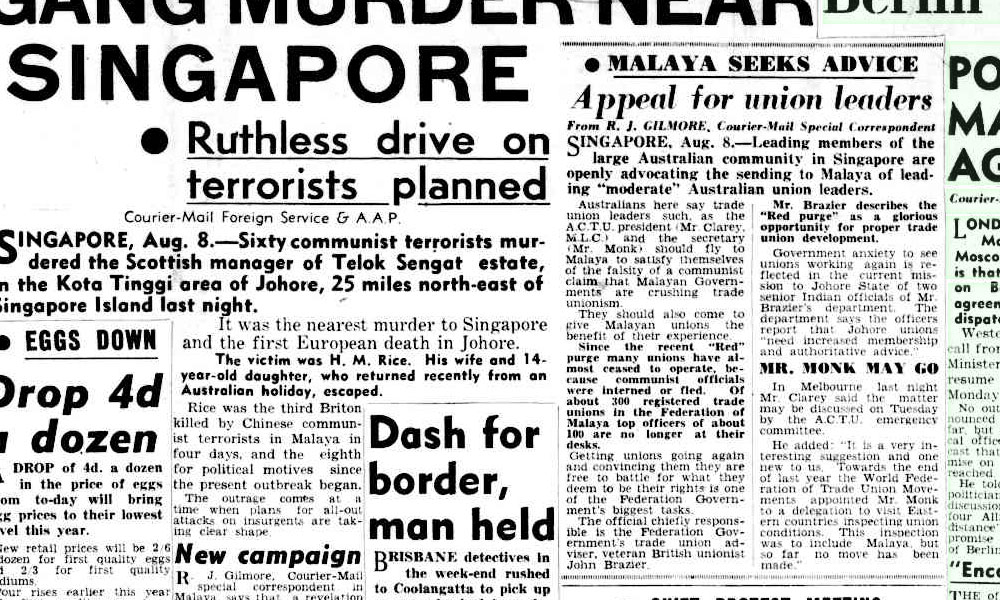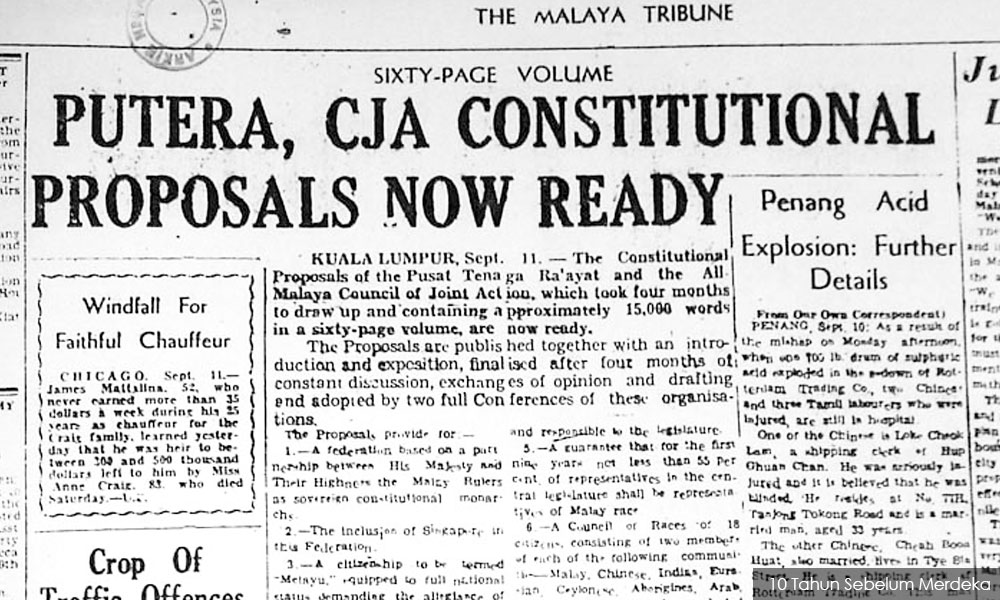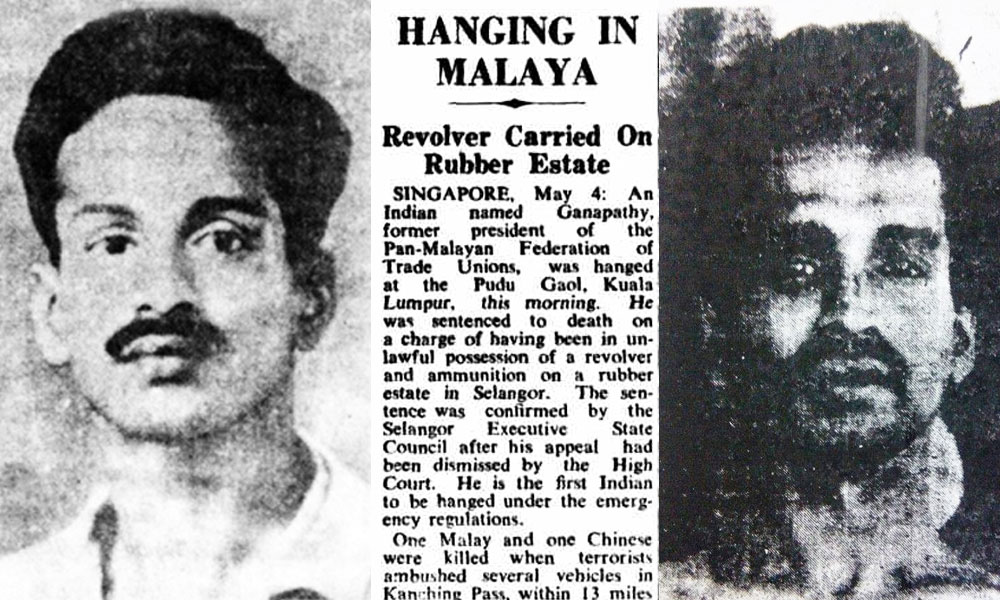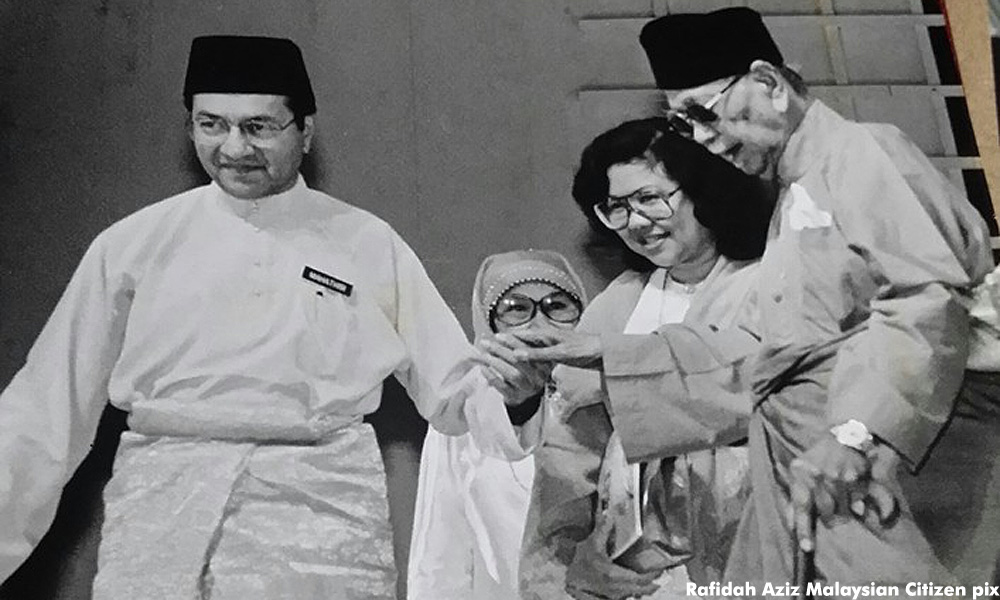This is part three of a series on the Malaysian labour movement.
FEATURE | In 1947, the Pan-Malayan General Labour Union, which was established in 1946, changed its name to Pan-Malayan Federation of Trade Unions (PMFTU).
It boasted a membership of 263,598, and this represented more than half the total workforce in Malaya. 85 percent of all existing unions in Malaya were part of the PMFTU.
The attitude of the Malayan worker was more assertive during this period. For instance, a strike was reported of Chinese and Indian hospital workers because they no longer wanted to be addressed as 'boy', and workers began to see their subjection to physical punishments as unacceptable.
Tamil trade unionists refused to suffer any longer the use of the derogatory term “Kling”. Estate workers no longer dismounted from their bicycles when a dorai, or planter, passed by.
In short, unions concern went beyond limited industrial relations matters or employee-employer matters concerning work rights and working conditions.
The British colonial government wanted to crush this development, and the ever-strengthening labour movement decided to “reconstruct” the organised labour movement in Malaysia and Singapore.
While the Singapore Trade Union Adviser, SP Garett, allowed the Singapore GLU (SGLU) to re-organize as a federation and operate legally without registering which led to the formation of the Singapore Federation of Trade Unions (SFTU) in August 1946.
In Malaya, however, the then Trade Union Adviser John Alfred Brazier did not want the same for Malaya – he did not want the PMGLU to be recognised or continue to exist.
Brazier ruled that all the branch unions had to register, and that thereafter there be no relationship between any of the newly registered unions with the PMGLU (that later came to be known as the PMFTU). The registered unions were not allowed to seek guidance or remit funds to PMFTU. This created problems for the PMFTU, that ultimately led to its demise.

The Trade Union Ordinance required the registration (or re-registration) of trade unions according to sector or industry, and this allowed the government to deny registration to unions they considered strong, unacceptable or “militant unions”.
Until the proclamation by the British colonial authorities of a state of emergency in Malaya and Singapore in 1948, most of the plantation trade unions and federations of plantation trade unions in Malaya were affiliated with the PMFTU.
It is of interest that the British may have considered the PMFTU a bigger threat than even the Communist Party of Malaya (CPM), for the PMFTU was outlawed even before the CPM was.
The influence of the Trade Union Adviser
Another method that was employed by the British, was to try and influence the trade unions, and to this end in 1945, a British trade unionist, John Alfred Brazier, was appointed by the government as Trade Union Adviser.
English-educated middle-class individuals were groomed and trained to replace the then existing progressive worker leadership of trade unions. One of the targeted unions were the plantation worker unions.

The government-appointed trade union adviser’s objective was not to strengthen, but rather, to weaken the labour movement in Malaya. This included eliminating the labour movement’s role in the political, socio-economic and cultural lives of the nation, and narrowly restricting its activities to “industrial relations”, that is the disputes between employers and workers.
This was an unnatural development, as workers are also citizens and humans who live in the country. Who wins the federal, state and local government elections is material – the wrong people and parties may mean anti-worker and anti-trade union policies and laws.
This restriction led to further erosion of worker rights and the power of negotiation for better terms. If the price of water, basic amenities, and the cost of living go up, it also has a direct impact on the lives of workers and their families. To bar unions and workers from taking up or speaking on such issues was absurd.
It must not be forgotten that workers and their unions had played a very significant role in the struggle for independence of Malaya from the British colonial government. They also played a significant role in developing the Constitution of Malaya - now Malaysia.
The PMFTU, Clerical Unions of Penang, Malacca, Selangor and Perak, and the Peasant's Union were a part of the All-Malayan Council of Joint Action (AMCJA), with Tan Cheng Lock as chairperson and Gerald de Cruz as Secretary-General, who actively campaigned on matters concerning the Malaysian Constitution.

It must be reiterated that what the British did to the trade unions in Malaysia was contrary to the accepted position and role of trade unions in England. To this day, trade unions in the United Kingdom continue to play an active role in the political life until today, being still very much affiliated to the Labour Party.
The manner in which the British treated the labour movement in Malaya and Singapore was not at all the same the way they treated their own labour movement in Britain.
In Malaysia, the object was clearly “union busting” for the benefit of employers and businesses, most of which were British-owned or controlled.
Other laws to suppress labour movement
Besides the new labour laws, the British colonial government also used other laws to suppress or carry out “union busting”.
In 1947, the ordinary trespassing law was used to keep union organisers from meeting and speaking with workers in plantations.
For instance in late March 1947, a large police force came to the Dublin estate in Kedah to arrest a federation of trade unions official for trespassing as he was speaking to a group of workers there. When the workers closed ranks around the official, the police opened fire, killing one worker and wounding five.

In a clash between police and workers at the Bedong estate on 3 March 1947, 21 workers were injured; whereby "the strike leader died of injuries received at the hands of the police a few days later". 61 of these workers were charged and sentenced to six months' imprisonment.
The existing law then was that workers could not be terminated just for exercising their right to strike, which was a worker’s right. But in October 1947, the Supreme Court ruled in a case involving three rubber tappers that striking was a breach of contract and that the dismissal was justified. This was a major change of law and policy.
Unionists were also convicted for intimidation. In November 1947, S Appadurai, vice-president of the Penang Federation of Trade Unions and chairperson of the Indian section of the Penang Harbour Labour Association was charged for having written to an employer warning him against using “backlegs”.
“Backlegs” are persons who act against the interests of a trade union by continuing to work during a strike, or taking over a striker's job during a strike. In law then and before this, it was wrong for employers to use “backlegs” when workers are on strike. However, in this case, the said union leader was found guilty and sent to prison.
In January 1948, K Vanivellu, secretary of the Kedah Federation of Rubber Workers Unions was charged for having written to an employer asking him to reinstate 14 workers who had been dismissed for striking and suggesting that if he did not, the remaining workers might leave their jobs.
Hence, various other laws and the courts were also used wrongly, for the purpose of “union-busting” pursuant to the new British policy of weakening the labour movement in Malaysia.
New amendments to the Trade Union Ordinance
The Trade Union Ordinance of 1940 was again amended to weaken unions. New amendments to the Trade Union Ordinance were passed by the Federal Legislative Council on 31 May 1948. The amendments were in three parts.
The first stipulated that a trade union official must have at least three years of experience in the industry concerned.
The second prohibited anyone convicted of certain criminal offenses (notably intimidation and extortion, which were common charges against unionists) from holding trade union office.
The third stated that a federation could only include workers from one trade or industry.
As Michael R Stenson said in his 1969 book, “Repression and Revolt: the Origins of the 1948 Communist Insurrection in Malaya and Singapore”, the first provision was seen as "a measure designed to exclude educated 'outsiders'”.
It also created problems because many workers worked in different industries and sectors, as work available during that time was not permanent, and had more of a seasonal or transient nature.
It was similar to what is happening now, with the use of precarious short-term contracts, where after the end of contracts, workers have no choice but to find another job, which more often than not is in a different industry and sector.
The third part that insisted that a federation could only include workers from one trade or industry effectively killed the PMFTU and even the SFTU. This divided private sector workers further, and it also affected public sector workers, because it prevented workers from different sectors and industries from coming together and fighting for better rights and common issues.
PMFTU outlawed in June 1948
On 12 June 1948, the British colonial government finally outlawed PMFTU. This is interesting considering the fact that the Malayan Communist Party and other left-wing groups were only made illegal later in July 1948.
Can we say that for the British colonial government, the bigger concern or threat was the labour movement and unions - not the Communist party?
Many of the leaders of the labour movement were arrested, charged, convicted and sentenced. SA Ganapathy, for example, who was the first president of the 300,000-strong PMFTU, was hanged by the British in May 1949.

He was said to be on the way to the police to surrender a firearm he found, when he was arrested by the police and sentenced to hang in Pudu Jail.
The birth of the Malaysian Trade Union Congress (MTUC)
Effectively, the British colonial government succeeded in crushing the labour movement in Malaya. With the requirement of registration, and the powers vested in the Registrar of Trade Unions, the government could now eliminate the stronger “troublemaker” trade unionist and trade unions, and break up the labour movement according to sectors/industries – divide and rule.
In January 1949, there only remained 163 registered trade unions with a total membership of only 68,814. In comparison, PMFTU had a membership of about 263,598 – which represented more than 50 percent of the total workforce.
The Council of Trade Unions was formed. It organised the Conference of Malayan Trade Union Delegates from 27 to 28 February 1949, and this gave birth to what is today known as the Malaysian Trades Union Congress (MTUC).
Now, since the amended new trade union laws prohibited the formation of trade union federations from different trades, sectors and industry, MTUC could not be registered as a trade union or a federation of trade unions, and had to be registered under the Societies Act as a society.
After Merdeka: The oppression continues
On 31st August 1957, Malaya got its independence from the British, but alas, the position of the new Umno-led coalition government that ruled since then until now did not differ much from their past British colonial masters.
Malaysia may have gained independence, but workers and trade unions continued to be denied independence.
They continued to be oppressed and suppressed, by the Umno-led government – who adopted and continued the British “divide and rule” policy and laws, and the restrictions and control with regard to trade union activities, trade union funds and even trade union leadership restrictions.
The struggle for Malaysian independence took many forms ranging from armed struggle to diplomatic negotiations, and for some the handing over power to the Umno-led coalition was not real independence, and some continued to struggle on.

The Umno-BN government and some leaders continue to be confused as to whom we were fighting to gain our independence from – the British or the Communist Party of Malaya (and others).
Members of the police and military serving the British colonial government are shockingly still seen as “heroes of independence”, and the recent invitation of 31 British army veterans to participate in the 2017 Independence Day celebration highlights this continued confusion.
Some suggest that the British choice in handing over power to the Umno-led coalition, a “friend”, was basically to ensure the protection of British-owned companies and assets, and the continued flow of resources and profits from Malaysia to Britain.
All these may not matter, as we now accept that Malaysia is an independent state. What matters is that workers, unions and the labour movement continue to be oppressed and/or stifled even many years after independence.
The role and influence of the labour movement in socio-economic and political life and future of the nation continues to be slowly eroded as the current government’s policy is perceived to be pro-businesses and employers.
A greater concern seems to be to ensure smooth unhindered operation of business and profits, something that may not change soon as the government too now are employers in the growing number of government-owned and/or controlled private businesses.
Part 1: The state of the labour movement in Malaysia
Part 2: The origins of the labour movement in Malaysia
Part 4: The last breath of the labour movement?
This article was first published by Aliran here. Malaysiakini has been authorised to republish it.





